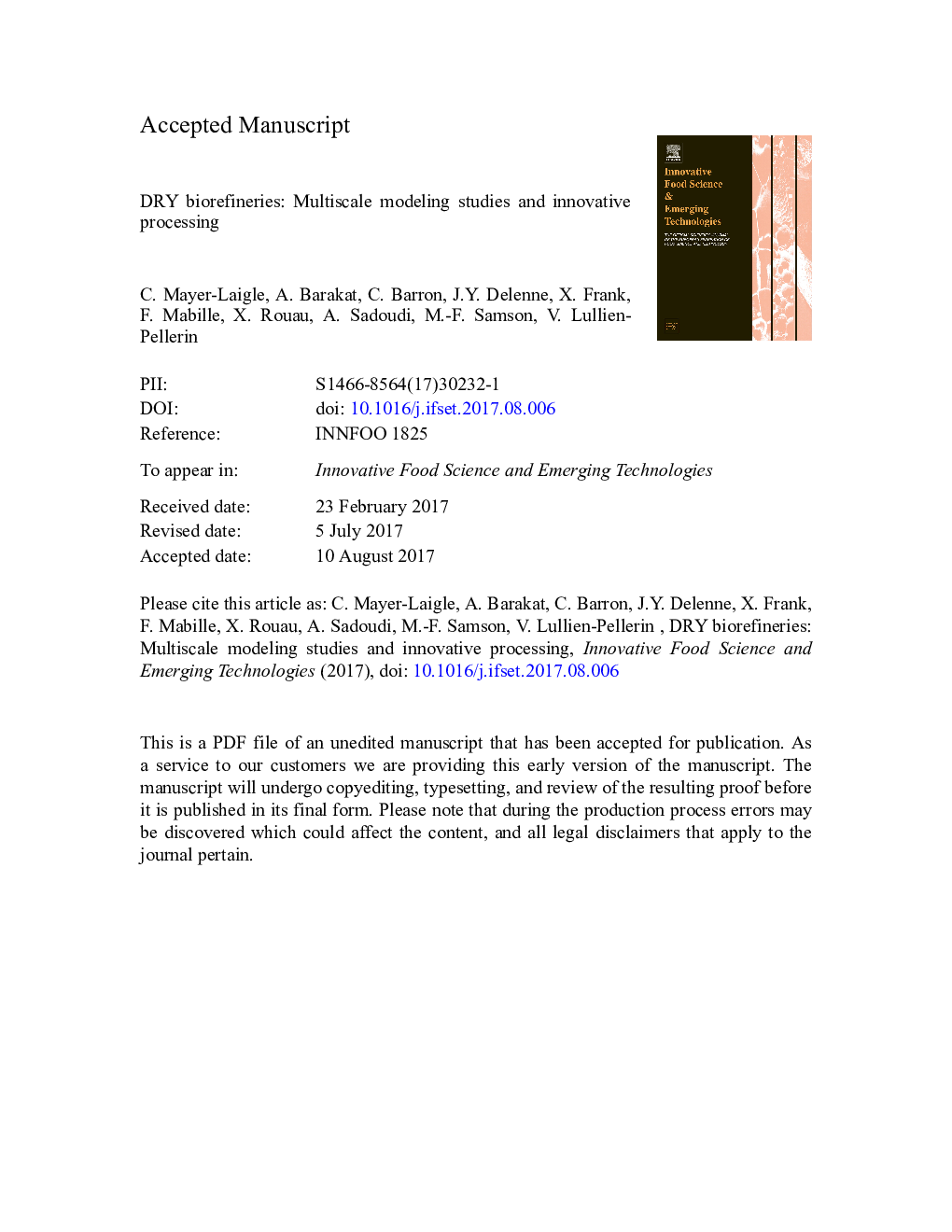| Article ID | Journal | Published Year | Pages | File Type |
|---|---|---|---|---|
| 8415514 | Innovative Food Science & Emerging Technologies | 2018 | 24 Pages |
Abstract
This paper reviews studies on green resource fractionation for two different types of material displaying a lignocellulosic or granular-type structure or a composite of the two. It explains how the identification of specific biochemical or spectral markers helps monitor tissue fate along processing and thus increase our knowledge on material fractionation. The key role of tissue mechanical properties in fracture behavior and the value of characterizing them were highlighted to better understand particle composition and properties. The effect of different modes of mechanical stress and strain during grinding as the main step of fractionation was illustrated. The value of different types of pre-treatment before or at grinding to reduce energy required to fracture and enhance dissociation or compound accessibility was presented. Separation methods based on differences in properties of the generated particles, and particularly innovative developments based on electrostatic sorting, were reviewed.
Related Topics
Life Sciences
Agricultural and Biological Sciences
Food Science
Authors
C. Mayer-Laigle, A. Barakat, C. Barron, J.Y. Delenne, X. Frank, F. Mabille, X. Rouau, A. Sadoudi, M.-F. Samson, V. Lullien-Pellerin,
